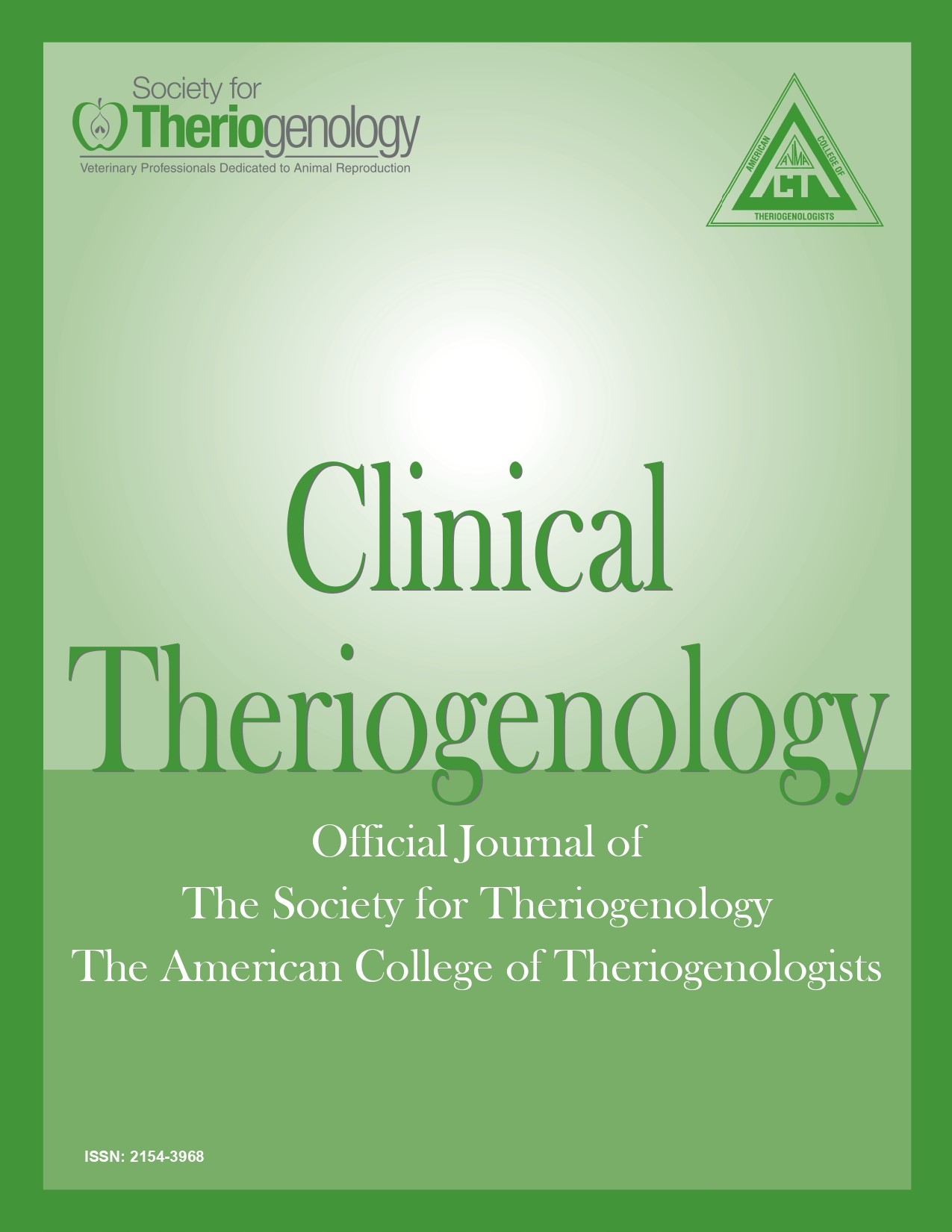Ovulation, pregnancy, and lambing rates during nonbreeding season with or without exogenous gonadotropin stimulation
Abstract
Our objective was to evaluate reproductive effects of varying gonadotropin dosages on anestrous ewes pretreated with progesterone and then exposed to a novel ram. Hypothesis was that a lower dosage of P.G. 600® (equine chorionic gonadotropin 80 IU/ml and human chorionic gonadotropin 40 IU/ml) induces estrus in anestrous ewes. Twenty-four anestrous ewes were treated with intravaginal progesterone-releasing devices for 9 days and given prostaglandin F2α 2 days prior to device withdrawal. On the day of progesterone withdrawal (day 0), ewes were given 5 ml of P.G. 600® (T1; n = 8), 1.5 ml of P.G. 600® (T2; n = 8) or 5 ml saline (control group, C; n = 8). Three rams were rotated every 4 hours through each group of ewes for 4 days. Venous blood samples were collected on day 0 prior to treatment (0 hour) and at 2, 4, 6, 8, 12, 24, 48, 72, 96, 120, 144, 168, and 336 hours. Serum estradiol-17β and progesterone concentrations were determined by chemiluminescence. Ovulation and pregnancy rates were determined using transrectal ultrasonography on days 9 - 11 and on days 21 and 28. Serum progesterone concentrations increased (p < 0.00001) in T1 compared to T2 and C groups. Serum estradiol concentrations, ovulation, pregnancy, and fecundity rates, and weaning weights were not significantly different among groups. We concluded that gonadotropin treatment neither enhanced nor diminished reproductive productivity.
Downloads

This work is licensed under a Creative Commons Attribution-NonCommercial 4.0 International License.
Authors retain copyright of their work, with first publication rights granted to Clinical Theriogenology. Read more about copyright and licensing here.





